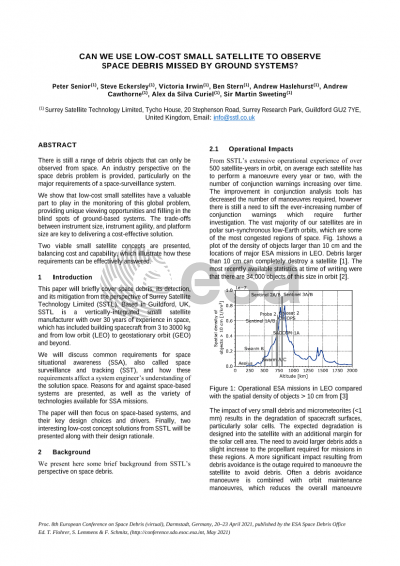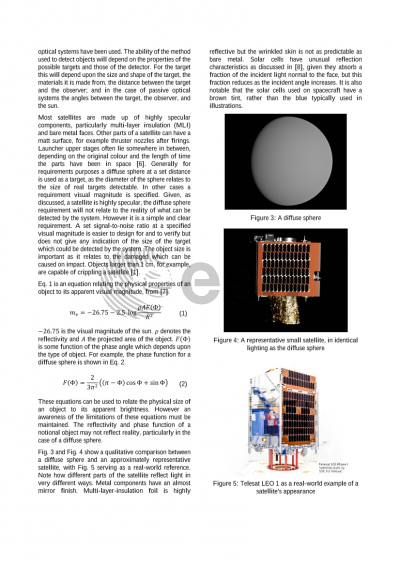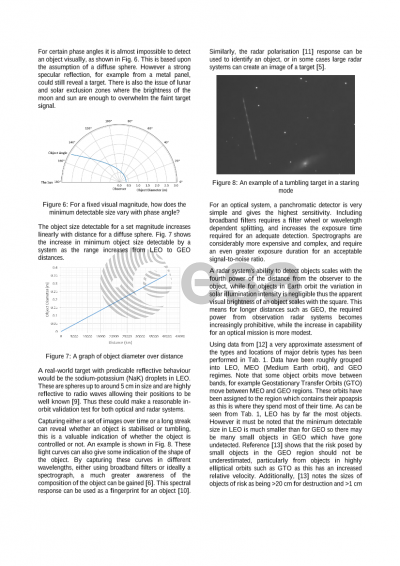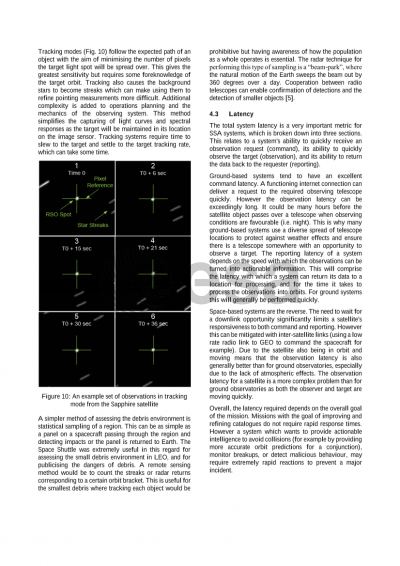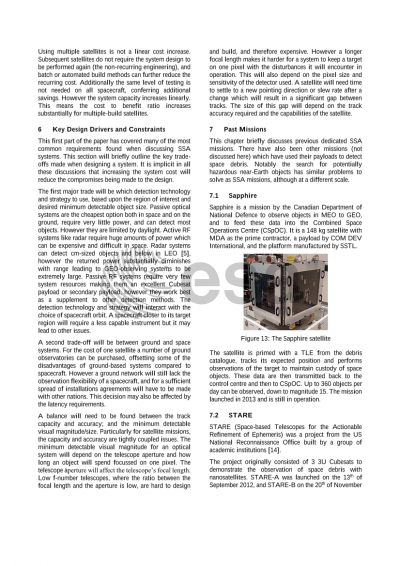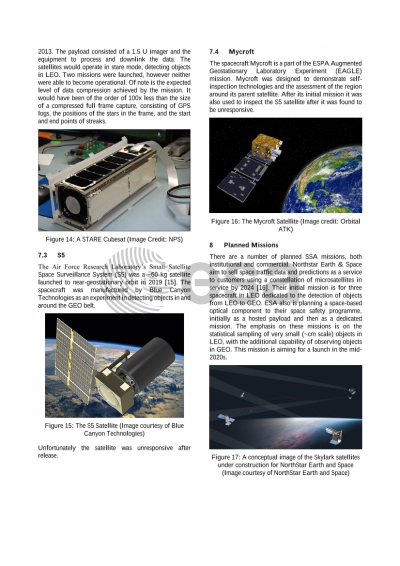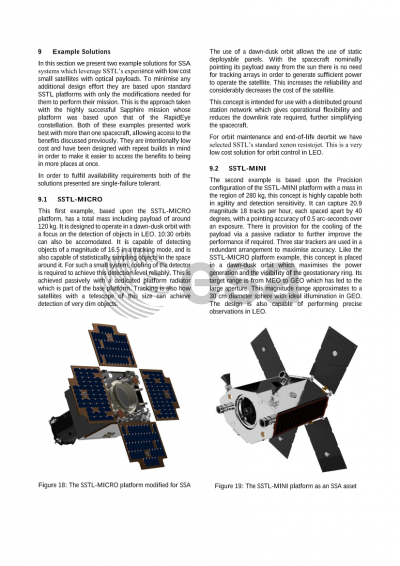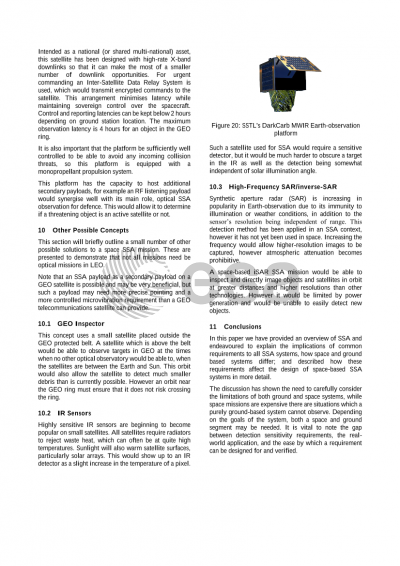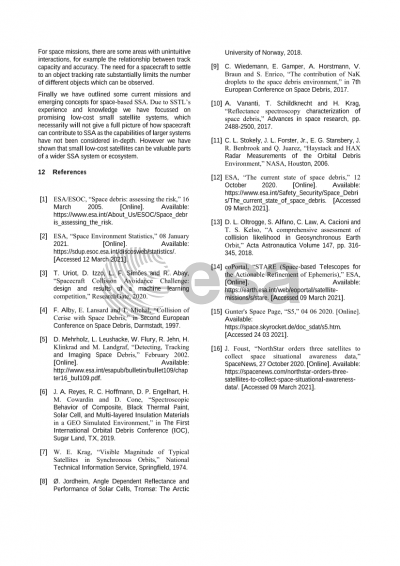Document details

Abstract
There is still a range of debris objects that can only be observed from space. An industry perspective on the space debris problem is provided, using the experience gained during development of the Sapphire-1 SSA mission and a number studies performed since. This is based on first-hand experience of the effects of an impact after the Cerise satellite was struck by debris in 1995. We show that low-cost small satellites have a valuable part to play in the monitoring of this global problem, providing unique viewing opportunities and filling in the blind spots of ground-based systems.
Common requirements demand the detection of centimetre-scale objects in LEO and the detection of decimetre-scale objects in the GEO region, with the ability to operate in both stare and track modes. The second driving requirement is the number of tracks collected over a time period (i.e. how many observations of objects can be performed). The distance between these observations drives the rate as the platform and instruments need to settle between slew operations. Detector sensitivity and aperture size drive the fulfilment of requirements on object size detection in specified modes. Cooling of detectors and stacking of images result in improved capabilities but have important system-level impacts which are discussed. Furthermore the pixel-based nature of common detectors requires additional margins due to the possible passage of a target over the edges of two or more pixels. Small pixel angular fields of view are needed for precise orbit determination of objects. Staring modes require large aperture instruments while tracking modes require an agile and flexible instrument. Spacecraft command, observation, and downlink latency are also meaningful performance metrics for rapid decision making. The trade-offs between instrument size, instrument agility, and platform size are key to delivering a cost-effective solution. At mission level, a further factor is the number of satellites, with increasing numbers allowing more observations and preventing the Earth from blocking targets from view.
Two viable small satellite concepts are presented, balancing cost and capability, which illustrate how these requirements can be effectively answered. One is based upon the highly successful Carbonite platform which has flown twice, and the other is an evolution of the DMC-3 (Triplesat) platform flown on four occasions, called “Precision SSA”. The smaller platform provides entry level SSA capabilities whereas the larger platform provides greater agility, a large payload aperture, and a very high downlink rate. These missions offer a cost-effective SSA mission based on a heritage platform, hardware and software architecture. The platforms are modified for an anti-sun pointing attitude in a dawn-dusk orbit, and the addition of Broadband Global Area Network terminals allow for rapid re-tasking of the spacecraft. The spacecraft are designed to work with the Viasat, KSAT, and AWS ground station networks resulting in low data delivery latency. They also include suitable propulsion systems to prevent these spacecraft becoming debris themselves.
Preview
